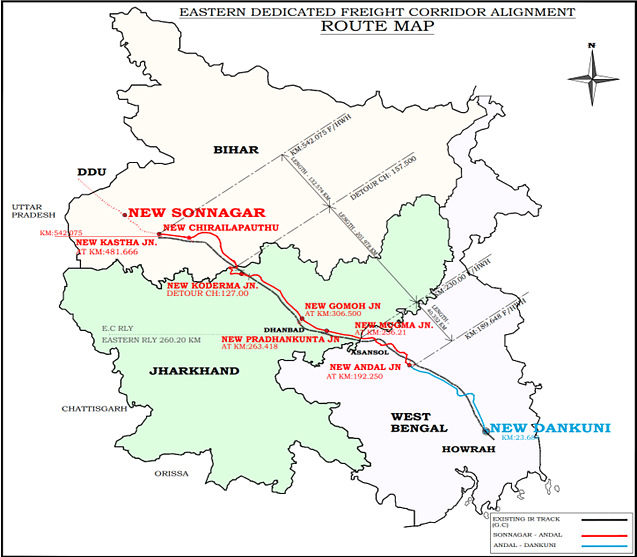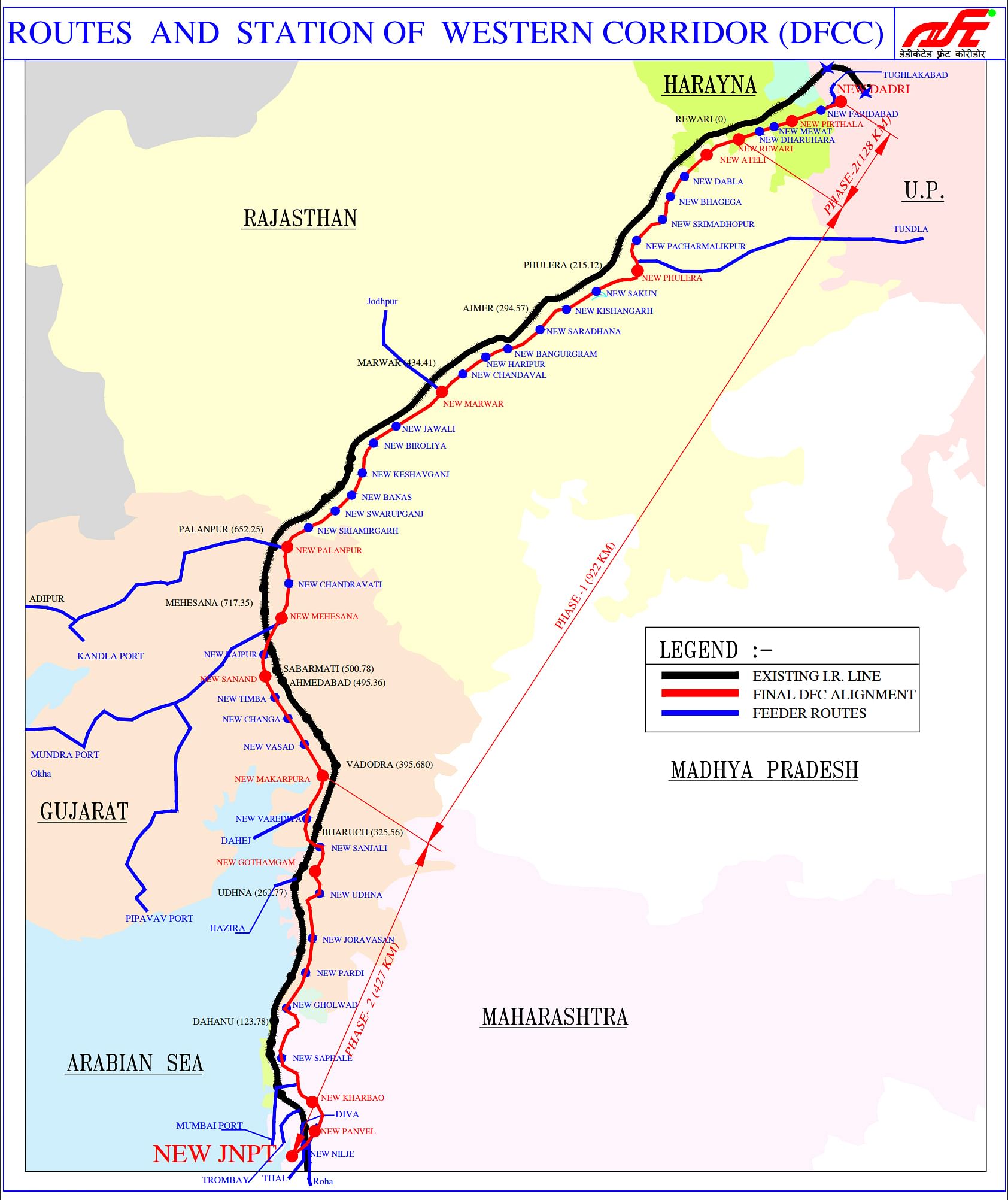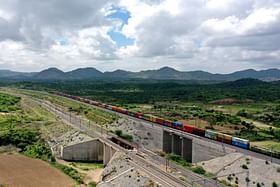About 73.5 per cent of the DFC has been commissioned, with the exception of Jawaharlal Nehru Port Trust (JNPT) connectivity, which is set to be completed by December 2023.
Dedicated Freight Corridor (DFC) hit a milestone of running one lakh trains with Jaya Varma Sinha, Member Operations and Business Development, Railway Board flagging off the 100,000th train recently.
Prime Minister Narendra Modi flagged off the DFC network’s inaugural train on December 12, 2020.
Since then, 55,332 trains have run on the Eastern Dedicated Freight Corridor (EDFC), while 44,658 trains have operated on the Western Dedicated Freight Corridor(WDFC), according to a DFC statement.
About 2089 Route km or 73.5 per cent of the DFC has been commissioned, with the exception of Jawaharlal Nehru Port Trust (JNPT) connectivity, which is set to be completed by December 2023.
New Dadri – New Rewari section allows seamless freight transportation from Uttar Pradesh hinterlands to Western Indian ports, according to the Economic Times report.
DFC is critical to the National Logistics Policy to lower logistics costs from 15 per cent of GDP to 8 per cent by 2030.
DFC’s freight infrastructure capacity increase is critical to achieving Indian Railways’ goal of 3000 MT freight loading by 2030.

So What Exactly Is A DFC?
These DFCs, if described in general colloquial language, are special tracks and arrangements for goods trains.
Infrastructure is the biggest source of competence of any nation. Today, when India is moving fast towards becoming the world’s big economic power, excellent connectivity is the priority of the country. Highways, railways, airways, waterways and i-ways (information ways) — the five wheels required for economic speed are necessary for rapid growth. The DFC is also a major step in this direction.
In the first phase, the government of India has approved construction of two corridors — the 1,875 km long Eastern Dedicated Freight Corridor (EDFC) and 1,506 km long Western Dedicated Freight Corridor (WDFC).
The DFC once constructed will decongest the railways’ network by moving 70 per cent of goods trains to these two corridors.
Eastern Dedicated Freight Corridor
The Eastern Dedicated Freight Corridor (EDFC) spans 1,337 km from Sahnewal near Ludhiana in Punjab, crossing through Haryana, Uttar Pradesh, and terminating at Sonnagar in Bihar.
As part of this freight corridor, the overall 538 km stretch between Sonnagar in Bihar and Dankuni in West Bengal was proposed to be executed under the public-private partnership (PPP) mode since the beginning.
This stretch was intended to be the apex of the railway’s monetisation efforts, providing private-sector players access to the corridor’s traffic.

For the 371 km stretch between Sonnagar (Bihar) and Andal (West Bengal) — proposed to be the first PPP project — the Dedicated Freight Corridor Corporation of India (DFCCIL) had reworked the proposal to attract bidders for the Rs 12,000-crore project and de-risk the private concessionaire.
The project was revised to be developed via a design, finance, build, operate and maintain and transfer (DFBOT) model.
Western Dedicated Freight Corridor (WDFC)
The WDFC connecting Dadri in Uttar Pradesh to Jawaharlal Nehru Port (JNPT) in Mumbai passes through five states of UP, Haryana, Rajasthan, Gujarat and Maharashtra.
The western corridor covers a distance of 1,504 km through double line electric (2 X 25 KV) track from JNPT to Dadri via Vadodara-Ahmedabad-Palanpur-Phulera-Rewari. The Western DFC is proposed to join the Eastern DFC at Dadri.
Western DFC would mainly cover Rajasthan (565 km), Maharashtra (177 km), Gujarat (565 km) Haryana (177 km) and about 18 km in Uttar Pradesh.

Alignment has been generally kept parallel to existing lines except provision of detour at Diva, Surat, Ankleshwar, Bharuch, Vadodara, Anand, Ahmedabad, Palanpur, Phulera and Rewari. However, it is entirely on a new alignment from Rewari to Dadri.


